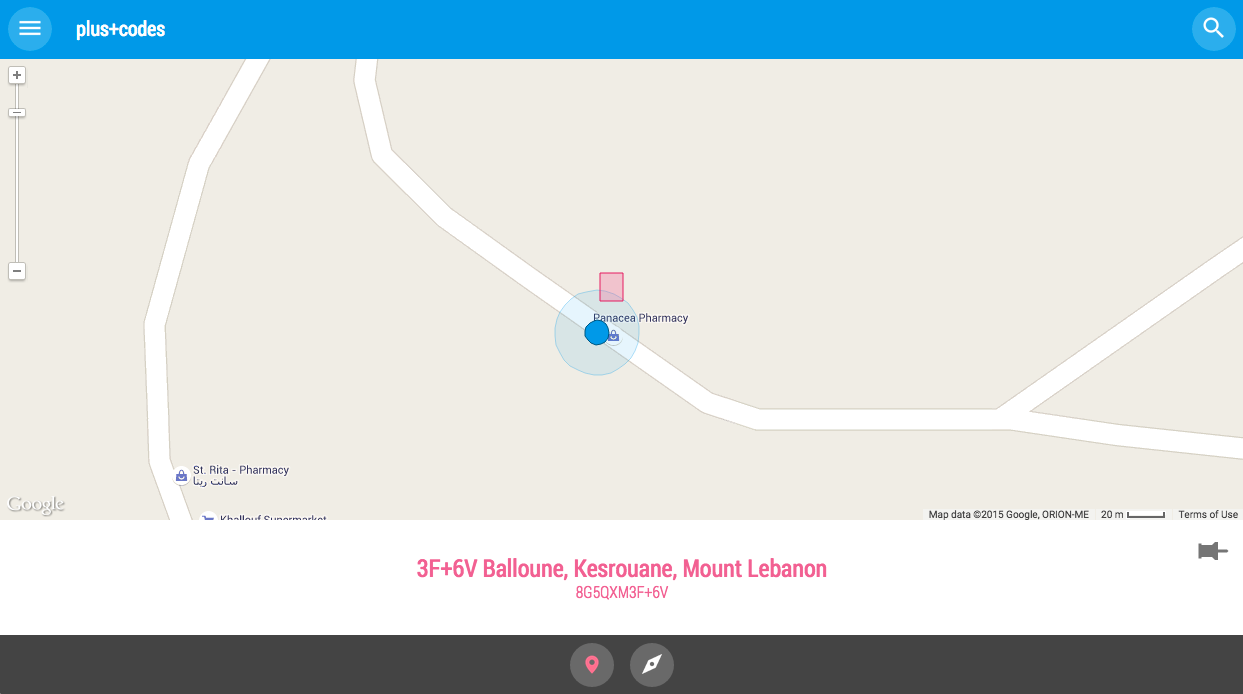Growing up in Lebanon, I got used to giving and receiving directions to my home as, "take the second right turn after the chicken restaurant, continue straight past the two gas stations, it's the first building on the left after the falafel stand, with a flower shop below it and facing a pharmacy." I even remember how long I had to stay on hold on the phone with some government dude just to get the ZIP code for my area. Then I opened my own pharmacy in a different area of Lebanon, where the streets were divided by colored sectors and the buildings were numbered, but still, no one used the provided addresses because they were accustomed to the old way of doing things. Now my pharmacy is a landmark that people use to point others to their houses.
So you can imagine how difficult it is to get to a new restaurant or a place in an area you don't know in Lebanon, when you have no address and Google Maps is of little help because businesses struggle to even figure out the proper way to get a verified listing here. It's a matter of calling the place or some friends to get directions, then heading there with a vague idea and stopping a couple of times to ask strangers on the street if you're going in the right direction.
That might change if people and businesses start using plus codes (aka Open Location Codes) more. And it applies not only for Lebanon, but countless other countries and areas in the world with no appropriate street address system. Google gives the example of Kibera in Kenya and Kathmandu in Nepal, but also a specific area of the beach in Atlantic Beach, or any remote location used by emergency or crisis response teams — the uses can be wide and varied. Plus codes are shorter than latitudes and longitudes, easier to share, not capital-reliant, and you can even only use the last four digits with the city or area name to make them easier to remember and type.
In order to get the plus code for a location or area, you can head over to plus.codes and see the short code with the area as well as the longer code beneath it (see: header image above). To use plus codes, all you have to do in Google Maps is type the short four digit code if you're already in the area, or add the region's name or use the long code if you're not.
Using the short 4-digit plus code (if you're already in the area) or the longer one in Google Maps
This is quite awesome. I'm going to cross my fingers and hope that plus codes become mainstream so that people and businesses start using them in Lebanon and other countries that need them.
Source: Google LatLong, Plus Codes

